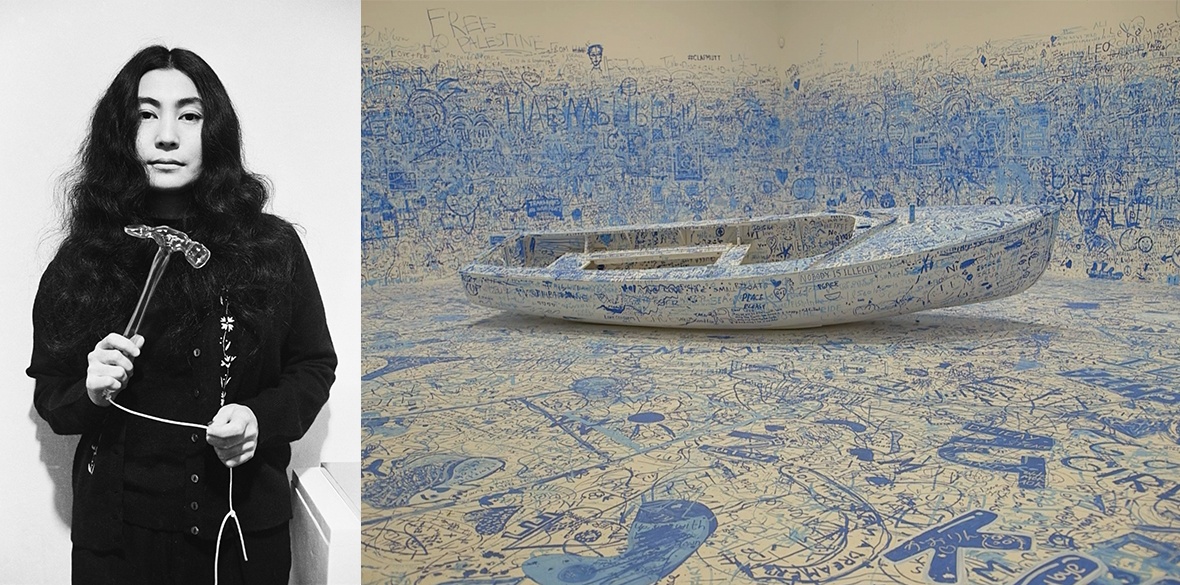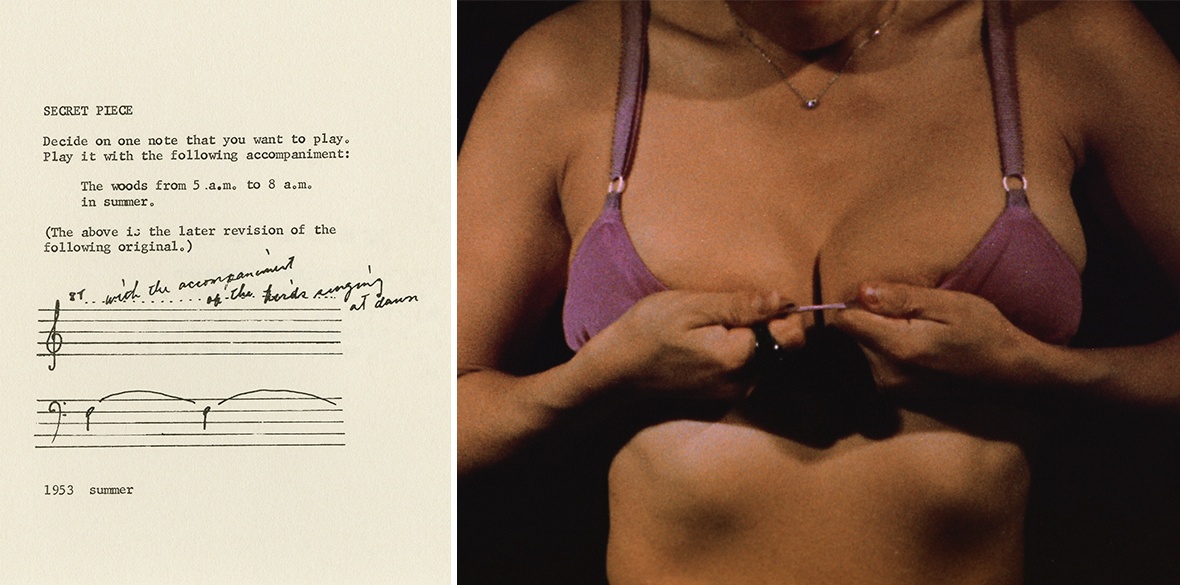This is the last article you can read this month
You can read more article this month
You can read more articles this month
Sorry your limit is up for this month
Reset on:
Please help support the Morning Star by subscribing here
Yoko Ono: Music of the Mind
Tate Modern

THE essence of Yoko Ono’s work lies in its dogged insistence on essential simplicity.
Music of the Mind, the title of her current retrospective at the Tate Modern, captures exactly the aspirations of an artist whose aim is to replace discordant and troubled complexity in people’s minds with gentler, more melodic ease. It also, of course, plays on her historical immersion in the music world at the highest level.
As the largest exhibition of Ono’s work ever in Britain, this event covers much of the artist’s life from her early avant-garde days in New York and birthplace Japan, to the living/breathing person she now is at the age of 91. And just to visit feels like a tribute to her steady, unswerving declamatory confidence.
As we walk in, we hear the simple sound of a phone lifted and the words: ”Hello. This is Yoko” in the artist’s familiar tones. The heart sinks. Will this work be overshadowed by the ego that drives it, we wonder. Is this all about Yoko?
But as we progress, we become collaborators and even equals. This is not about elitism, we realise, but inclusion and Ono is second to none in her call-out to the world to relinquish conformity and strip back thinking to a refreshing minimalism.
At first, it’s easy to be resistant to this call. Ono has weathered a lifetime of ridicule, and any modern audience will wonder if this is justified. Is she a self-obsessed crank or an artist of note? This question still haunts, even with Ono’s formidable past.

After all, never has she reached the established acceptance of a Warhol or a Banksy, nor the surge in popularity of a Marina Abramovitch. And why? Is it because she has been dogged by prejudice, whether racial or sexual, or because she bewitched John Lennon and thereby destroyed the Beatles, or because of her druggy past, or because she is just too wacky and alternative ever to enter the mainstream? The accusations are endless.
So, does this display of over 200 exhibits overturn the doubts?
Well, it takes every chance by exploring the artist fully in her own right, with a hefty focus on the 1950s and early 1960s when she was forging her way into the hearts and minds of a – let’s face it – largely mystified audience.
And it wins over the sceptics, drowning out any ideas that this is just silliness, and replacing resistance with an immersive experience that includes us all in a calm and purposeful pilgrimage towards a better world. By the end of the journey, the artist is no longer a single dominant voice, nor even a persuasive Pied Piper. Rather she becomes an enabler whose call to arms is founded on the power of collective experience and on a singular hope generated by benign, unified action.
The exhibits are many and varied.
Film footage and sensational photographs recall her early work and development. We can sit and watch her famous Cut Piece event from 1964 where visitors take turns to cut off pieces of her clothes, or we can pick up headphones and hear her wail and scream or murmur softly. We can watch her fingers strike a match and see the flame repeatedly flare and retreat, and we can watch her eye blink in slow motion – a study of time passing, akin to Warhol’s work.

We can learn about the artist’s life: that she had to flee the bombing of Tokyo in 1945, that she studied classical music, worked seriously with John Cage and has had three husbands, while maintaining a calm dignity and unshaken sense of purpose.
We can view hundreds of drawings and writing in her tiny hand. We can experience the poetic, the artistic and the aspirational all in one. We can hammer in nails, write and display our own dreams and messages like blossom on a tree, or play chess on a snow-white board. We can experience the horror of divorce through objects brutally severed in half and we can enter the room of the Refugee Boat, a small, vulnerable vessel rocked to one side and covered with shades of blue felt tip – an overwhelming mass contribution from artist and visitors alike that testifies to a solidarity formed on the back of thousands of shared whispers. We can all write on a post-it a message to our mothers.
And all this to a gentle soundtrack of the odd cough, a toilet flushing, Yoko’s voice on the edge of hearing, a sudden silence. The exhibition in the end denies the need for assertive noise. Rather a truth emerges through a shared quietness. And that truth is the real potential for peace and togetherness.
Yoko Ono was married to John Lennon for 11 years and John is here, of course, in full if restrained evidence of his effortless talent for touching the hearts of millions that throws into relief Yoko’s struggle with her own, less naturally charismatic style. War is Over (if you want it), Give Peace A Chance and Imagine still capture, in Lennon’s words and music, all that Yoko Ono represents. And over him she held an unparalleled power.
If Lennon could share her dream, then so can I. And the underplayed footage of John, the peace bed, the bagism bags and the single chilling bullet hole are heart-stopping.
Altogether an elegant, uplifting show, distilling from us all a kinder and purer togetherness.
Yoko Ono: Music of the Mind runs until September 1. For more information see: tate.org.uk










